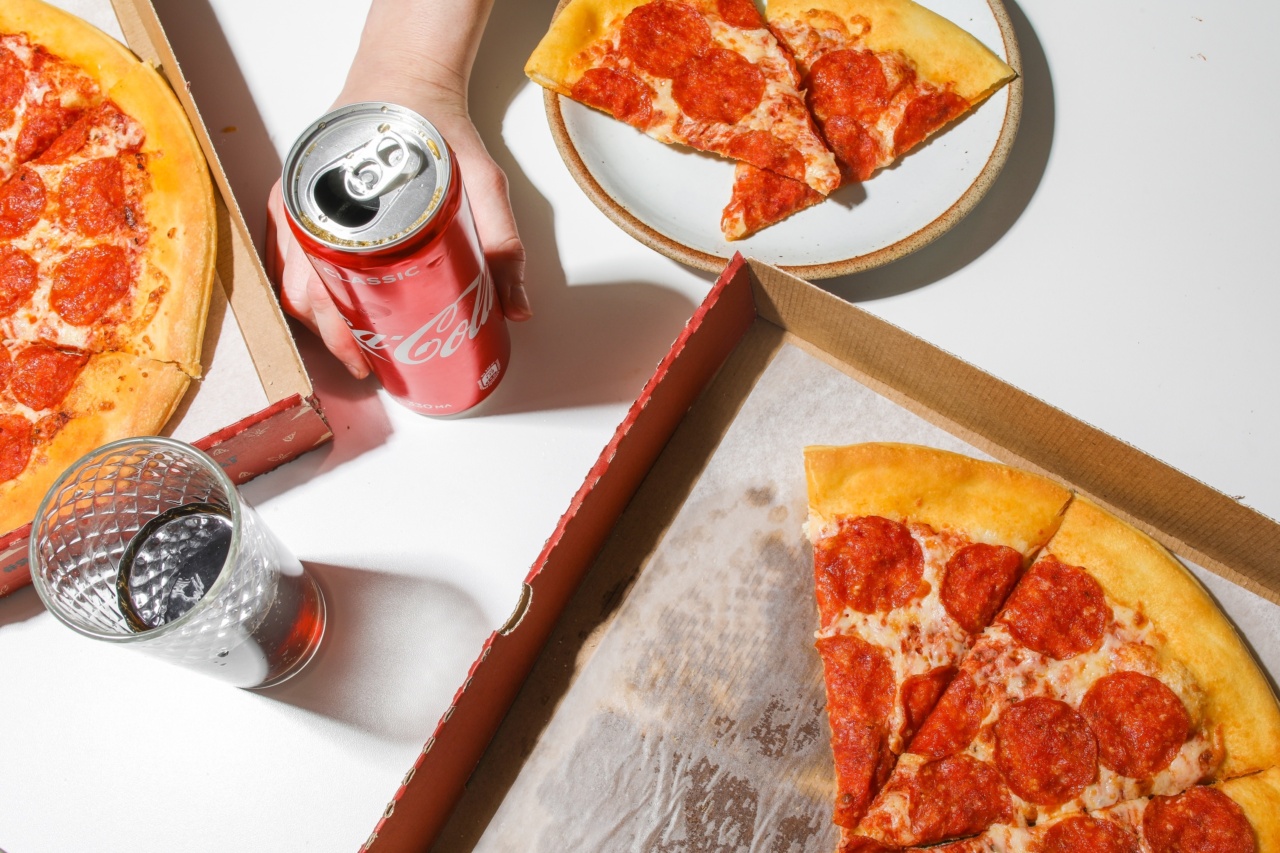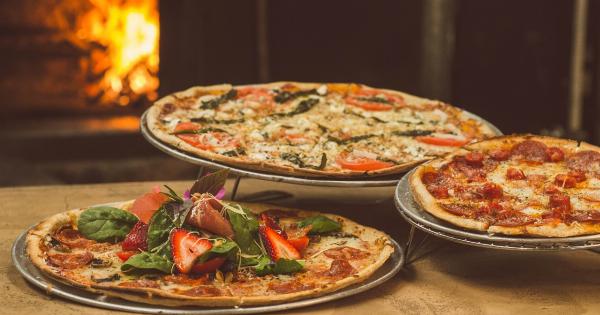There’s no denying the universal love for pizza.
Whether it’s a thin-crusted Neapolitan masterpiece, a deep-dish delight from Chicago, or a classic New York slice, pizza has become an iconic dish that satisfies our cravings and brings people together. And at the heart of every unforgettable pizza lies an essential ingredient: cheese.
The Role of Cheese in Pizza
Cheese is not just a topping for pizza; it is the crown jewel that enhances the flavors and ties all the ingredients together. Its gooey texture, delicious taste, and beautiful golden-brown crust are what make pizzas truly irresistible.
But what happens to cheese when it’s heated in the oven? Let’s delve into the world of cheese science and unveil the secrets behind the perfect pizza topping.
Melting Point and Maillard Reaction
When cheese is heated, it undergoes various transformations. One of the key factors is its melting point, which differs depending on the type of cheese.
Mozzarella, a popular choice for pizza, has a relatively low melting point due to its high water content and unique protein structure. As a result, it becomes delightfully stretchy when exposed to heat.
But the melting point alone doesn’t explain the magical browning that occurs on the surface of the cheese. This is where the Maillard reaction comes into play.
The Maillard reaction is a chemical reaction between the proteins and sugars in the cheese, which gives pizza its irresistible flavor and golden crust. As the cheese heats up, the amino acids and sugars react, creating a complex array of new compounds that contribute to the delightful aroma and taste.
The Cheese Stretch
One of the most satisfying moments of eating a pizza is experiencing the glorious cheese stretch. So, what causes this mesmerizing phenomenon? It all comes down to the cheese’s protein structure.
The proteins in cheese, specifically casein, form a network when heated, trapping pockets of hot melted fat within. When you take a bite or lift a slice, the cheese stretches due to the separation of these protein bonds, creating that irresistible, drool-worthy cheese pull.
The Perfect Cheese Blend
While mozzarella is the classic choice for pizza, it’s not the only cheese that can elevate your pie. Combining different types of cheeses can enhance the flavors and bring a unique twist to your pizza. Some popular cheese blends for pizza include:.
-
1. Mozzarella and Cheddar
-
2. Provolone and Parmesan
-
3. Fontina and Gorgonzola
-
4. Feta and Ricotta
The combination of mozzarella and cheddar offers a perfect balance of gooeyness and sharpness. The mozzarella provides the stretchy, melty texture, while the cheddar adds a rich, tangy flavor.
Provolone has a buttery and slightly smoky taste that complements the nutty, salty flavor of Parmesan. Together, they create a well-rounded and flavorful topping.
For those who enjoy a more adventurous flavor profile, a blend of Fontina and Gorgonzola delivers a combination of creamy, earthy, and mildly pungent notes.
If you prefer a lighter and tangier cheese combination, feta and ricotta are an excellent choice. The crumbly and salty feta pairs beautifully with the creamy and slightly sweet ricotta.
Ultimately, the perfect cheese blend depends on your personal preference and the type of pizza you’re creating. Experimenting with different combinations can lead to delicious discoveries and make your pizza truly extraordinary.
Choosing the Right Cheese for Different Pizza Styles
Just as there are various pizza styles, each with its characteristics and origins, there are also specific cheeses that pair harmoniously with each style. Here are a few examples:.
Neapolitan Pizza: This classic Italian style pizza is known for its thin, soft, and chewy crust. Buffalo mozzarella is traditionally used to achieve that authentic Neapolitan flavor.
Chicago Deep-Dish Pizza: With its thick, buttery crust and generous layers of toppings, Chicago deep-dish pizza calls for a sturdy and robust cheese. Mozzarella combined with a blend of cheddar and Parmesan works exceptionally well.
New York Slice: The quintessential New York slice is characterized by its large, foldable slices with a thin yet crispy crust.
The cheese of choice is often a low-moisture mozzarella, which provides a good balance of flavor, meltability, and browning.
Perfecting the Cheese-to-Sauce Ratio
When it comes to toppings, finding the right balance between cheese and sauce is crucial for creating a harmonious pizza. Too much cheese can overwhelm the other flavors, while too little can result in a lackluster pie.
Achieving the perfect cheese-to-sauce ratio is as much an art as it is a science.
A general guideline is to aim for about 2 ounces of cheese per 14-inch pizza. However, this can vary depending on the desired thickness of the cheese layer and the specific cheese used.
To avoid a gloopy mess, evenly distribute the cheese, leaving a border at the edges for a delectable crust.
The Impact of Cheese on Crust Texture
A well-made pizza crust is crisp on the outside yet soft and chewy on the inside.
But did you know that cheese can influence the texture of the crust? When cheese is placed directly on top of the dough, it forms a layer that prevents moisture from being absorbed. This results in a crisper crust as it retains less moisture during the baking process.
However, if you prefer a softer and chewier crust, you can apply a thin layer of sauce or oil between the dough and the cheese. This helps create a barrier and allows moisture to be absorbed, resulting in a more tender crust.
Artisanal and Unique Cheese Varieties
While traditional cheeses like mozzarella, cheddar, and Parmesan are widely used in pizza-making, there is a world of artisanal and unique cheese varieties waiting to be explored. Here are a few captivating options:.
-
1. Burrata
-
2. Gruyère
-
3. Smoked Gouda
-
4. Asiago
Burrata is a creamy Italian cheese made from mozzarella and cream. It’s a decadent choice that adds a luxurious touch to any pizza.
This Swiss cheese is known for its nutty and slightly sweet flavor. Gruyère melts beautifully and imparts a rich taste to pizzas.
For those who crave a smoky and savory dimension, smoked Gouda is an excellent choice. Its distinctive flavor adds depth to any pizza.
Originating from Italy, Asiago cheese has a tangy and robust flavor. It’s often grated or shredded and used as a topping or blended with other cheeses.
Exploring these unique cheese varieties can elevate your pizza experience and introduce you to delightful and unexpected flavors.
Conclusion
Cheese is undoubtedly one of the most critical components of a perfect pizza topping.
Through the wonders of science, we now understand the various transformations that occur when cheese is heated, leading to the melty, stretchy, and delicious result we all crave. From experimenting with different cheese blends to understanding the impact on crust texture, cheese opens up a world of possibilities for pizza lovers.
So, the next time you bite into a mouthwatering slice, take a moment to appreciate the cheese science that makes it all possible!.































